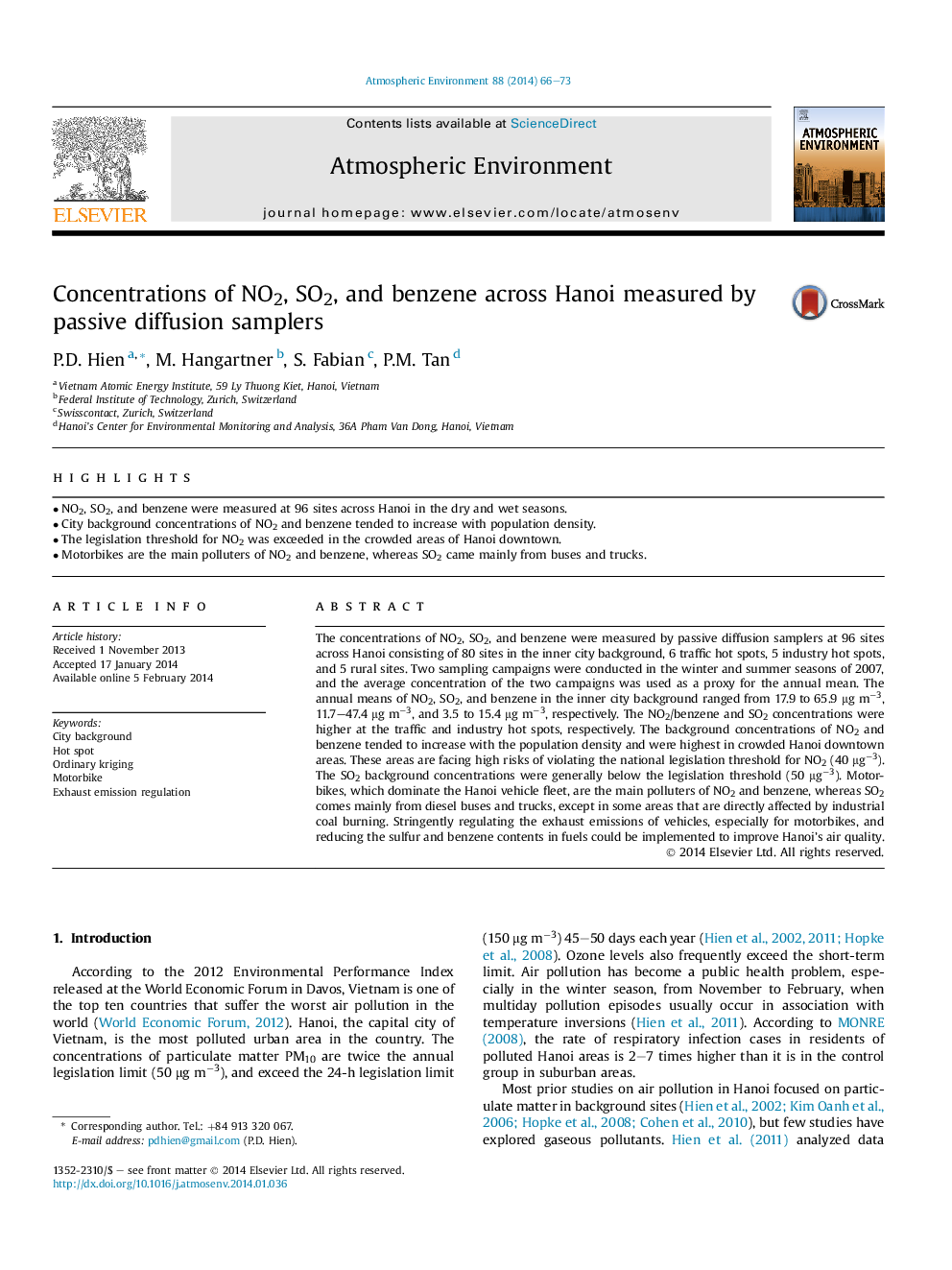| Article ID | Journal | Published Year | Pages | File Type |
|---|---|---|---|---|
| 6340839 | Atmospheric Environment | 2014 | 8 Pages |
â¢NO2, SO2, and benzene were measured at 96 sites across Hanoi in the dry and wet seasons.â¢City background concentrations of NO2 and benzene tended to increase with population density.â¢The legislation threshold for NO2 was exceeded in the crowded areas of Hanoi downtown.â¢Motorbikes are the main polluters of NO2 and benzene, whereas SO2 came mainly from buses and trucks.
The concentrations of NO2, SO2, and benzene were measured by passive diffusion samplers at 96 sites across Hanoi consisting of 80 sites in the inner city background, 6 traffic hot spots, 5 industry hot spots, and 5 rural sites. Two sampling campaigns were conducted in the winter and summer seasons of 2007, and the average concentration of the two campaigns was used as a proxy for the annual mean. The annual means of NO2, SO2, and benzene in the inner city background ranged from 17.9 to 65.9 μg mâ3, 11.7-47.4 μg mâ3, and 3.5 to 15.4 μg mâ3, respectively. The NO2/benzene and SO2 concentrations were higher at the traffic and industry hot spots, respectively. The background concentrations of NO2 and benzene tended to increase with the population density and were highest in crowded Hanoi downtown areas. These areas are facing high risks of violating the national legislation threshold for NO2 (40 μgâ3). The SO2 background concentrations were generally below the legislation threshold (50 μgâ3). Motorbikes, which dominate the Hanoi vehicle fleet, are the main polluters of NO2 and benzene, whereas SO2 comes mainly from diesel buses and trucks, except in some areas that are directly affected by industrial coal burning. Stringently regulating the exhaust emissions of vehicles, especially for motorbikes, and reducing the sulfur and benzene contents in fuels could be implemented to improve Hanoi's air quality.
